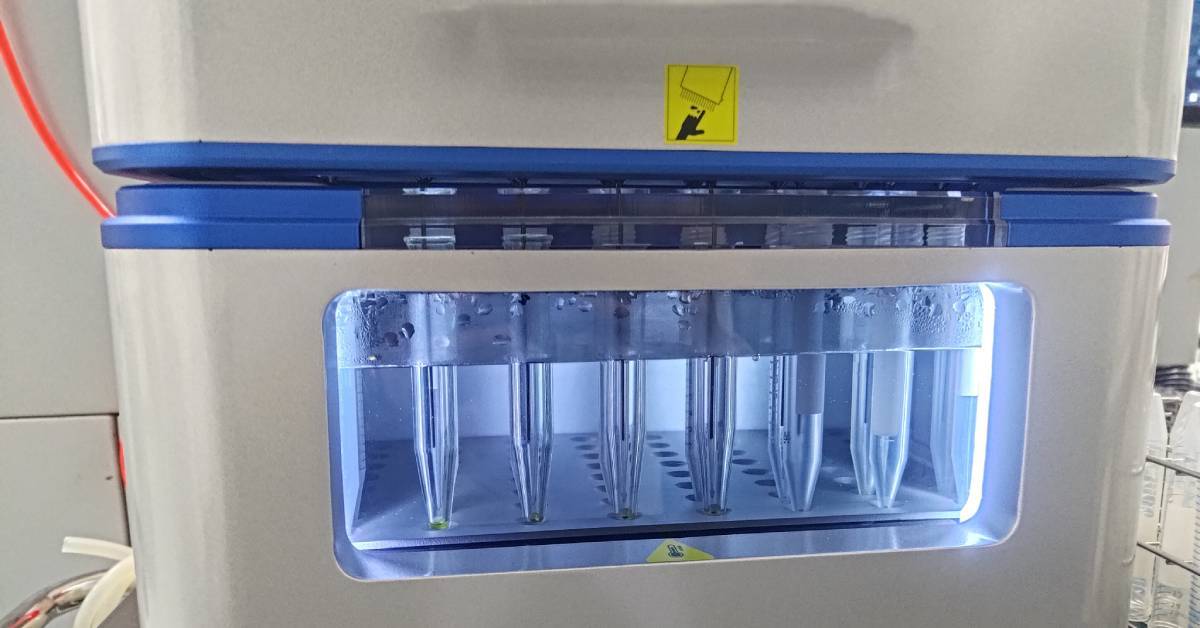An Essential Guide to Best Practices in Liquid Lab Handling
Liquid lab handling is fundamental in scientific research, medical diagnostics, and industrial applications, requiring precision, accuracy, and care. Whether working in a clinical laboratory, conducting molecular biology experiments, or managing liquid workflows in a manufacturing environment, proper liquid handling is crucial to the success of your results.
With the proper techniques, tools, and protocols, you can minimize errors, ensure reproducibility, and protect your samples and team. This guide to best practices in liquid lab handling offers help for professionals of all expertise levels to achieve consistency and improve productivity.
Each practice builds the foundation for consistent, high-quality results and promotes a safer, more efficient laboratory environment. This information will help you enhance your best practices, further supporting accuracy and precision in every step.
Understand Liquid Properties Before Handling
A thorough understanding of a liquid’s properties is essential for effective handling and precise experimentation, as these characteristics greatly influence the liquid’s behavior. Viscosity, which affects a liquid’s resistance to flow; density, which determines its mass per unit volume; and volatility, which reflects its tendency to evaporate, affect how liquids interact with tools.
High-viscosity liquids like glycerol require slower pipetting speeds and may necessitate specialized equipment for accurate transfer without introducing errors. Volatile liquids may demand closed systems or adjusted handling techniques to minimize evaporation.
Follow Ergonomic Pipetting Techniques
Repetitive pipetting is a common task in laboratory work, but it can lead to hand strain, discomfort, or even long-term repetitive strain injuries if not performed properly. Adopting ergonomic pipetting techniques is essential for efficiency and physical well-being. These techniques include maintaining a relaxed and neutral wrist position during use, avoiding excessive grip force, and keeping pipetting angles consistent to reduce strain on the hand and arm.
Selecting ergonomically designed pipettes with lightweight bodies and adjustable settings can further reduce the physical effort required over extended periods of use. Taking short, frequent breaks and alternating tasks reduces muscle fatigue for sustained performance and lower injury risk.
Ensure Sample Integrity
Sample integrity is vital in liquid handling for accurate, reliable results. Contamination risks can stem from various factors, including inadequate cleaning, improper storage, or cross contamination during transfers. To mitigate these risks, use sterile tips and tools, maintain clean and organized workspaces, and label samples clearly to prevent misidentification.
Handling sensitive samples carefully is important; minimizing their exposure to environmental factors such as evaporation, temperature fluctuations, or direct contact with contaminants helps preserve their quality. Regularly inspect equipment and protocols to uphold the highest standards, ensuring that every step of the liquid-handling process contributes to the integrity of your specimens and overall experimentation success.
Choose the Right Equipment

Selecting reliable liquid-handling products is fundamental to achieving precision and efficiency in liquid-handling tasks. Laboratories rely on various tools, including pipettes, dispensers, microplates, and automated liquid handlers suited to specific workflows and experiments.
Adjustable micropipettes are ideal for accurately handling small liquid volumes, while multichannel pipettes streamline high-throughput applications by reducing repetitive motions. Automated liquid handlers can enhance productivity, particularly in complex or large-scale workflows. The key to optimal performance lies in matching the right tool to the task and investing in reliable, high-quality instruments.
Know the Role of Calibration
Calibration plays a crucial role in ensuring the precision and accuracy of pipetting, which is fundamental for reliable experimental outcomes. Over time, repeated use, wear and tear, or improper handling can cause pipettes to deviate from their intended performance, leading to inaccuracies.
Regular calibration helps maintain the equipment’s functionality and ensures compliance with quality and regulatory standards. Implementing a routine calibration schedule minimizes the risk of measurement errors, safeguarding the integrity of your data. Laboratories can perform periodic gravimetric checks internally to promptly identify performance issues, while certified professionals can provide in-depth service to restore accuracy fully.
Rely on Automation
The integration of automation in liquid-handling processes has revolutionized laboratory workflows, offering improvements in efficiency, accuracy, and safety. Advanced robotic pipetting systems and liquid-handling workstations can handle high-throughput tasks with exceptional precision, minimizing the risk of human error for reproducible results.
These systems are valuable in applications that demand repetitive pipetting or involve hazardous or sensitive substances, reducing the physical strain on lab personnel and improving overall safety. Automation enables laboratories to streamline complex processes, allocate resources more effectively, and increase experimental throughput without compromising quality.
Learn Temperature Control for Liquids

Temperature impacts the behavior of liquids during handling and thus requires careful management for accuracy and consistency. Cold liquids tend to have higher viscosity, causing slower flow rates and potentially leading to inaccuracies when pipetting or dispensing.
Warm liquids are prone to evaporation, which can alter concentrations and compromise volumetric precision. You can mitigate these challenges by employing temperature-controlled storage solutions and adopting best practices, such as allowing liquids to equilibrate to room temperature before handling. Maintaining precise temperature conditions throughout the process ensures optimal performance and minimizes experimental variability for temperature-sensitive substances or applications.
Follow Proper Use of Liquid Reagents
Proper handling of liquid reagents is essential for achieving accurate and reliable results in a laboratory setting. Each reagent has specific storage, preparation, and use requirements, so it’s critical to adhere to the manufacturer’s guidelines to maintain their integrity and effectiveness.
Thoroughly mix reagents for homogeneity before dispensing, as uneven mixing can lead to inconsistent results. Label all reagents and solutions with their names, concentrations, and preparation dates to minimize confusion and errors. When working with premixed reagents, assign expiration dates and rigorously track usage to prevent the use of degraded or expired solutions.
Stay Current With Training and Protocols
Keeping up to date with training and protocols is essential, as liquid handling techniques advance alongside technological innovations. Ensuring that all lab personnel receive continuous education on the latest methods, equipment, and industry standards is crucial. Regular training sessions reinforce the proper usage of tools and adherence to protocols, reducing potential errors for consistent, high-quality results.
Fostering a learning-focused lab culture also encourages staff to stay informed about new developments and best practices. A well-trained team with a comprehensive understanding and implementation of these protocols improves operational efficiency and bolsters experimental outcomes’ reliability and reproducibility.
This guide to liquid lab handling proves that maintaining a safe lab is an ongoing process that requires skill, attention to detail, and a commitment to best practices. From choosing the right tools to adopting effective techniques, each small action contributes to the overall success of your lab.
You can foster an efficient and precise laboratory environment by incorporating these tips and using high-quality, reliable liquid-handling products. With proper care, liquid handling becomes more than just a routine task; it becomes a critical component of successful science.
Recent Posts
-
The Role of Desiccants in Protecting Hygroscopic Chemicals
Hygroscopic chemicals readily absorb moisture from the surrounding environment, leading to compromis …May 19th 2025 -
All About Pairing Containers With Corrosive Substances
Handling corrosive substances is critical in many industries, including manufacturing, pharmaceutica …May 12th 2025 -
Why Solvent Purity Is Crucial in the World of Chemistry
When producing accurate and reliable results in chemistry, solvent purity is non-negotiable. Many se …May 11th 2025




